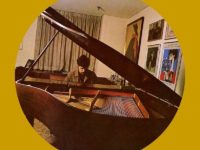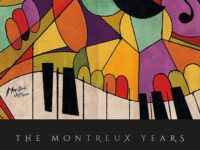Most conversations about classic fusion jazz bands involve Miles Davis and the various groups started by former members of his band: Weather Report, Mahavishnu Orchestra and Return To Forever. But Return To Forever wasn’t the only fusion project of note that was led by the late keyboard giant Chick Corea. For about five years from the late 80s to early 90s, he helmed another lethally talented group, the Chick Corea Elektric Band.
I’m as guilty as anyone else for forgetting about Corea’s second sustained rock-jazz effort, even though I bought most of the Elektric Band albums when they came out. But now Candid Records is giving fusion jazz enthusiasts a good reason to appreciate them all over again and give the newer listeners a chance to discover another quality act of the genre when they’re ready to move past the usual suspects.
Candid has re-released all five Chick Corea Elektric Band studio albums, and they are now available on streaming platforms. They will also go on sale as individual CD’s and a 5-LP vinyl box set on December 1, 2023. Further, a previously unreleased live album The Future Is Now from the Elektric Band’s 2016-17 reunion tour releases on November 3.
The Chick Corea Elektric Band got started in 1986 with bassist John Patitucci and drummer David Weckl, but the self-titled debut was all about Corea’s prowess on electronic keyboards (“Got A Match?” is a jaw-dropping example) and while Patitucci and Weckl got their own advanced licks in, The Chick Corea Elektric Band is less of a band album and is best considered a straight-up Chick Corea album.
Light Years is where the Chick Corea Elektric Band began to gel as a true ensemble, and that’s why I’m choosing this one to hone in on for this space. While Corea remained the dominant voice, the group played with greater unity and purpose, and the other band members received more solo space and other features. It also saw the addition of two players who completed the lineup that would go on for the remaining four Chick Corea Elektric Band albums: Eric Marienthal on saxes and Frank Gambale on electric guitar.
My contemporaneous impression of Light Years was that it resembled The Jeff Lorber Fusion and Herbie Hancock’s Headhunters a lot more than Return to Forever and revisiting this today I still don’t think that’s far off the mark. Which didn’t bother me all that much because I liked/like those bands, too. If you’re not in the mood to hear Chick get arty, whimsical or overly jazzy and just want to hear him and his mates shred like rock stars, this is a good place for that.
“Light Years” charts the course for much of the album with Patitucci’s slap bass and Weckl’s booming, assertive drums. Gambale’s presence moves the music in a rock direction and he and Marienthal are already shaping the emerging sound of the Elektric Group by giving Corea a counterpoint to his arsenal of keys.
If the mission of this album is to provide heady and somewhat cultivated funk-jazz then “Time Track” is the cut that hits the mark squarely. The flowery intro could provide the basis for a fetching song on its own, but that’s a sly head-fake: the band launches into a groove as tight as anything RTF has done and the three-way trading of fours between Corea, Marienthal and Gambale is red meat for ’70s fusion fans.
The hard funk of “Starlight” could have been easily mistaken for David Sanborn’s music right at the same time. (To be fair to Marienthal, most contemporary jazz sax players in 1987 sounded just like Sanborn, to the point where I suspected it was some sort of requirement.)
Gentler tunes are sprinkled throughout to balance things out a bit, with “Prism” having the strongest melody, though it doesn’t sound much like something Chick Corea would typically compose. But I’m not complaining.
A handful of tracks such as “Your Eyes” and “Flamingo” go sax-less, giving Corea more of the floor and Gambale remaining as his main foil. One (“Smokescreen”) is reduced down to a Corea/Weckl duo with Corea playing piano over a synth that convincingly mimics a slap bass.
Right at the end, the Elektric Band break from the formula a bit for “Kaleidoscope,” a world fusion sonic ecosystem built by layers of programmed synthesizers, bristling with unison lines, and keyboard and guitar licks coming from everywhere.
All those Oberheim and Synclavier keyboards along with Weckl’s Simmons and electronic drums were state-of-the-art equipment then but date the music today. That would become less of an issue with the three succeeding albums, which are artistically more sophisticated and diverse, but also less funky and accessible. However, the musicianship is undeniable across all five albums and at times, Corea wrote originals for the band that squared with his reputation as a master composer.
Looking back some 35 years later, it would be overstating it to put Chick Corea’s Elektric Band’s output right alongside Corea classics like Now He Sings, Now He Sobs, Light as a Feather or even Hymn of the Seventh Galaxy. But during a time when fusion jazz was largely devolving into smooth jazz, Corea came back to the electric format to keep the flame of more discerning contemporary jazz going, and through the continuing work of his protégés in the band, that flame is still burning today.
To pre-order Chick Corea Elektric Band: The Complete Studio Recordings 1986-1991, the individual CDs and Chick Corea Elektric Band: The Future Is Now, go here.




